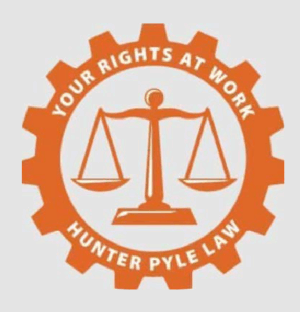California Wage and Hour Class Actions: Some Guidance after Brinker and Duran
California courts continue to grapple with two recent California Supreme Court decisions: Brinker Restaurant Corp. v. Superior Court (“Brinker”) and Duran v. U.S. Bank (“Duran”). Three cases decided within the past year help to shed light on how these cases have altered the class action landscape.
Three cases decided within the past year help to shed light on how these cases have altered the class action landscape.
First, in Koval v. Pacific Bell Telephone Co. (2014) 232 Cal.App.4th 1050, the First District Court of Appeal considered a case that arose in Alameda County Superior Court. Koval involved claims by Field Technicians that they were not able to take meal and rest breaks. The plaintiffs’ case was complicated by the fact that Pac Bell had facially compliant meal and rest break policies. However, the plaintiffs’ based their claims on 13 other documents that pertained to Pac Bell’s “Job Performance Policies and Expectations.” Those documents contained hundreds of guidelines and best practices regarding Field Technician duties. The plaintiffs extracted from them seven guidelines that restricted Field Technicians’ ability to take meal and rest breaks.
Both the trial court and the court of appeal grounded their conclusion that class certification was not appropriate in the following language from Brinker: “ Claims alleging that a uniform policy consistently applied to a group of employees is in violation of the wage and hour laws are of the sort routinely, and properly, found suitable for class treatment.” The plaintiffs argued that this language required the trial court to certify the class. Both the trial court and the court of appeal rejected this interpretation.
Instead, both courts broke up the Brinker test into two inquiries. First, is there a uniform policy? And, if so, was it consistently communicated to the Field Technicians? The superior court held that the answer to the first question was yes (and that any issues that arose could be handled through subclasses). However, the answer to the second question was no because the evidence showed that the policies were disseminated orally in ways that varied widely. The court of appeal held that this was not error.
Koval therefore stands for the proposition that policies that are conveyed orally and differently may pose significant hurdles for class certification. This is so even if a company’s policies are found to be uniform.
While the plaintiffs in Koval lost their motion for class certification, it is significant that the court of appeal cited with approval the following language in another 2014 case, Hall v. Rite Aid Corp. (2014) 226 Cal.App.4th 278, 289: “[W]here the theory of liability asserts the employer’s uniform policy violates California’s labor laws, factual distinctions among whether or how employees were or were not adversely impacted by the allegedly illegal policy does not preclude certification.”
The second case, Mies v. Sephora U.S.A. (2015) 234 Cal.App.4th 967, also comes from the First District Court of Appeal. Mies originated in the San Francisco Superior Court. Mies sought to represent a class of Specialists who worked in Sephora’s California retail stores. She alleged that the Specialists were misclassified and should not be exempt from various wage and hour protections.
Mies based her class certification motion on three arguments. First, Mies argued that Specialists all shared identical job descriptions. Second, she argued that Sephora had done an in-house survey showing that Specialists, among other employees, generally spent the same amount of time engaging in nonexempt activities. Last, she claimed that the court could look to statistical evidence, but did not propose or justify any particular statistical methodology. The trial court denied certification, and the court of appeal affirmed.
The court of appeal based its decision primarily on two points. The central issue in Mies would have been “how the Specialists spend their time.” This is not necessarily fatal, particularly where employees perform jobs that are highly standardized. But when a defendant presents evidence that the duties of the employees vary widely, this presents a hurdle for class certification. Common policies alone may not be enough to overcome that hurdle. Moreover, it was not enough for Mies to propose to use statistical evidence. Her proposal was undeveloped and unsubstantiated, and therefore was of limited utility.
The third case is Safeway v. Superior Court (2015) 238 Cal.App.4th 1138. In that case, the trial court (Judge John Wiley of the Los Angeles Superior Court) certified a meal break class based on California’s Unfair Competition Law, Bus. & Prof. Code § 17200 et seq. The plaintiffs’ theory was that Safeway had failed to pay meal breaks when required. Under that theory, when an employer pressures or directs an employee to miss, shorten, or delay meal breaks, the employer is required to pay the employee premium wages without any demand or action by the employee.
The court of appeal rejected several challenges to the plaintiffs’ use of the UCL to certify a class. Where the evidence pointed to a “deep, system-wide error,” a UCL claim was appropriate. The plaintiffs’ met their burden of proving this error by submitting evidence of Safeway workers being directed or pressured not to take meal breaks; the fact that Safeway had no mechanism to calculate or pay premium pay for missed meal breaks; and the fact that Safeway’s own records showed over 27 million missed meal breaks.
Finally, it is important to note that Safeway relies in part upon Justice Werdegar’s concurring opinion in Brinker. There, she notes that the applicable wage orders require employers to keep proper records regarding meal breaks. And where those records show that an employee is not provided a meal break as required by law, a rebuttable presumption arises that the employer broke the law. An employer’s claim that the employee waived his or her meal break is an affirmative defense, not something that the employee must disprove.
The Safeway court adopted the rationale in Justice Werdegar’s concurrence, and relied on it in affirming the trial court’s decision to grant class certification.
Koval, Mies, and Safeway therefore shed some light on the California class action landscape post Brinker and Duran. That landscape continues to shift with some frequency and is not likely to settle any time soon.


